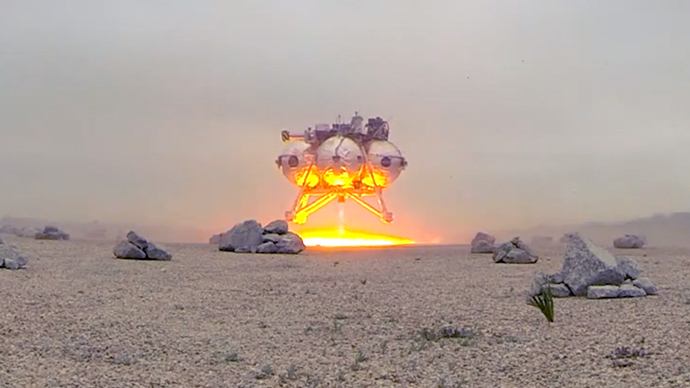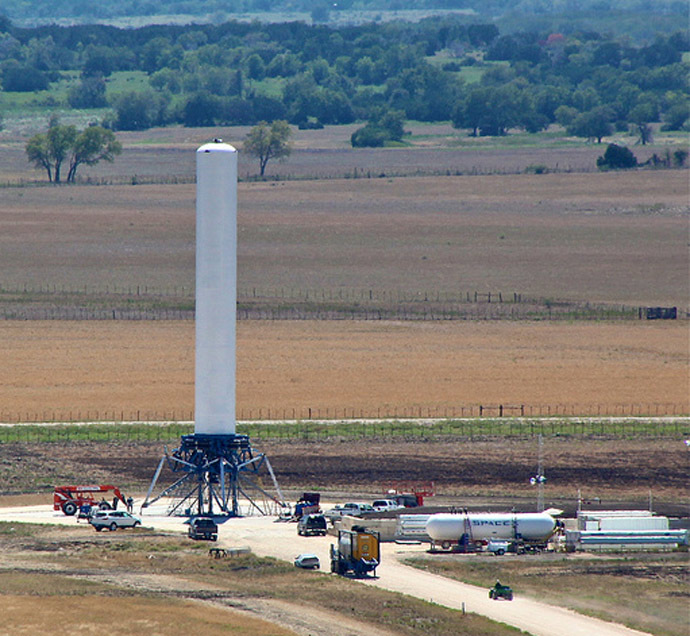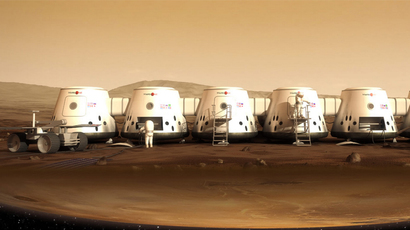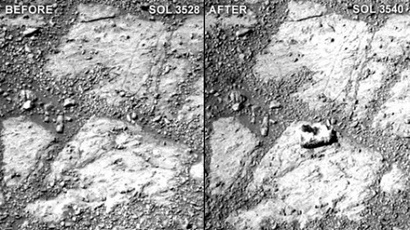NASA reveals hovering prototype planetary lander Morpheus (VIDEO)

NASA’s latest test vehicle may not survive in its current form going forward, but its ability to hover like a helicopter and land on tough terrain could prove integral to future missions to Mars and other interplanetary locations.
Dubbed “Morpheus,” the new rocket prototype was successfully tested last week at the Kennedy Space Center’s Shuttle Landing Facility in Florida. While vehicle’s design looks strikingly like an alien aircraft or something you’d expect to see out of a science fiction movie, it’s Morpheus’ capabilities that have scientists and engineers most excited.
As you can see in the video posted by the Morpheus team, the vehicle launches vertically into the air, flies around the landscape and can hover in place like a helicopter. Importantly, it can also control its descent back down to Earth and land upright. Considering rockets have generally been designed to be expendable – they either burn up in the atmosphere or crash into the ocean upon re-entry into Earth – developing vehicles that can survive more than one voyage would significantly help control the costs of space exploration.
According to the Atlantic, Morpheus probably won’t become an operational vehicle in its own right. Instead, the project has been designed specifically to experiment with features that could potentially be borrowed and used in other designs – such as its hover capabilities and ability to land on unstable terrain.
Perhaps just as important is the fact that Morpheus runs on a new propulsion system using liquid oxygen and methane as fuel. Crucially, these two components have been labeled as “green” fuels that can be manufactured on other planets.
Last week’s successful flight also followed a botched attempt to test Morpheus in 2012, when it experienced a “hardware component failure” and crashed soon after takeoff.
Of course, Morpheus’s vertical landing ability is also being reproduced in other spacecraft – notably the “Grasshopper” rocket designed by SpaceX. Founded by Tesla CEO Elon Musk, the company successfully launched and landed a reusable Grasshopper prototype in October 2013.

As for NASA, the Morpheus test comes as the agency has requested more money from Congress to fund its space exploration efforts in the fiscal 2015 budget. As RT reported in the past, NASA is hard at work on efforts to capture and land an astronaut on an asteroid, and it has also been testing new spacesuits that allow for increased mobility. Other projects include extending the life of the International Space Station and exploring a possible mission to Europa, one of Jupiter’s moons believed to contain more water than there is in all of the Earth’s oceans.
Still, the budget request does include some space-related cuts, including a $300 million decrease in the Exploration Systems Development category. As noted by Slate, this department is in charge of designing the next-generation Space Launch System rocket, which was criticized as unnecessary in January by former NASA deputy administrator Lori Garver.














